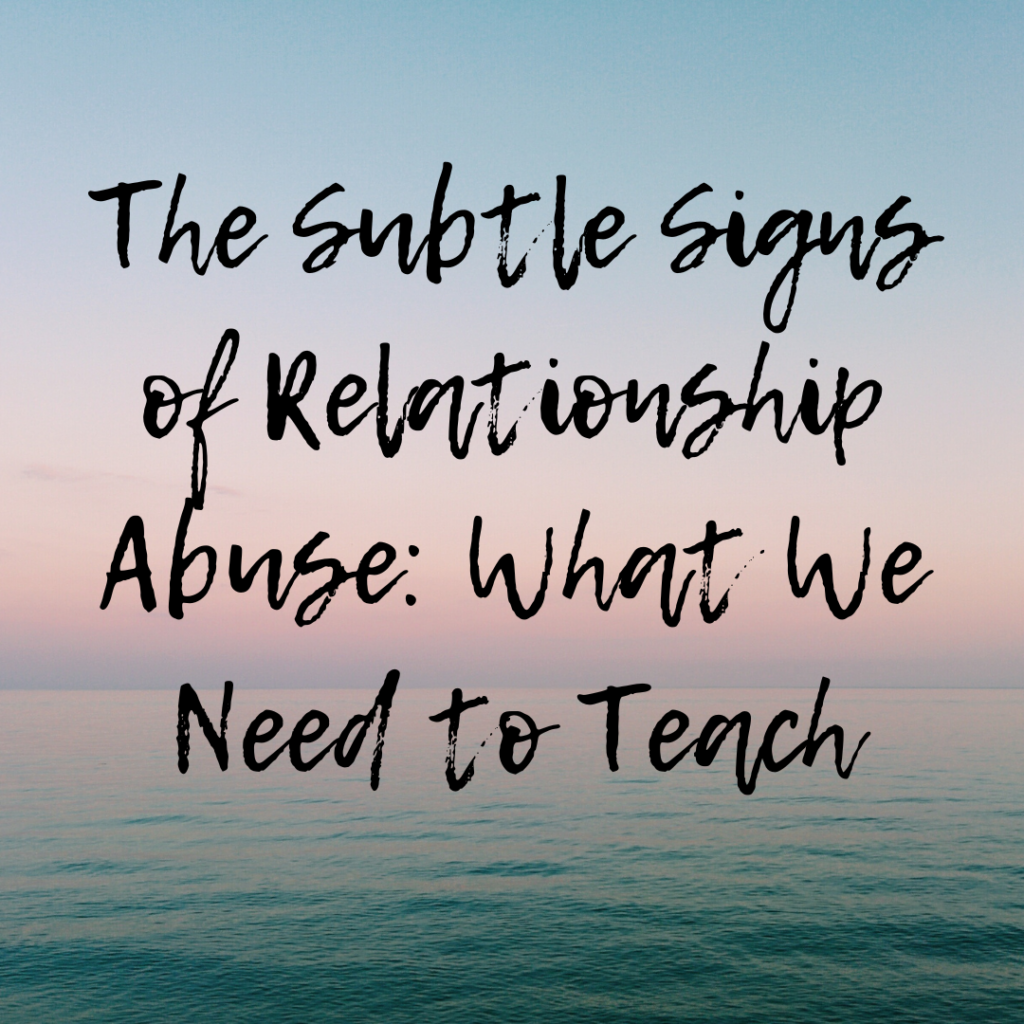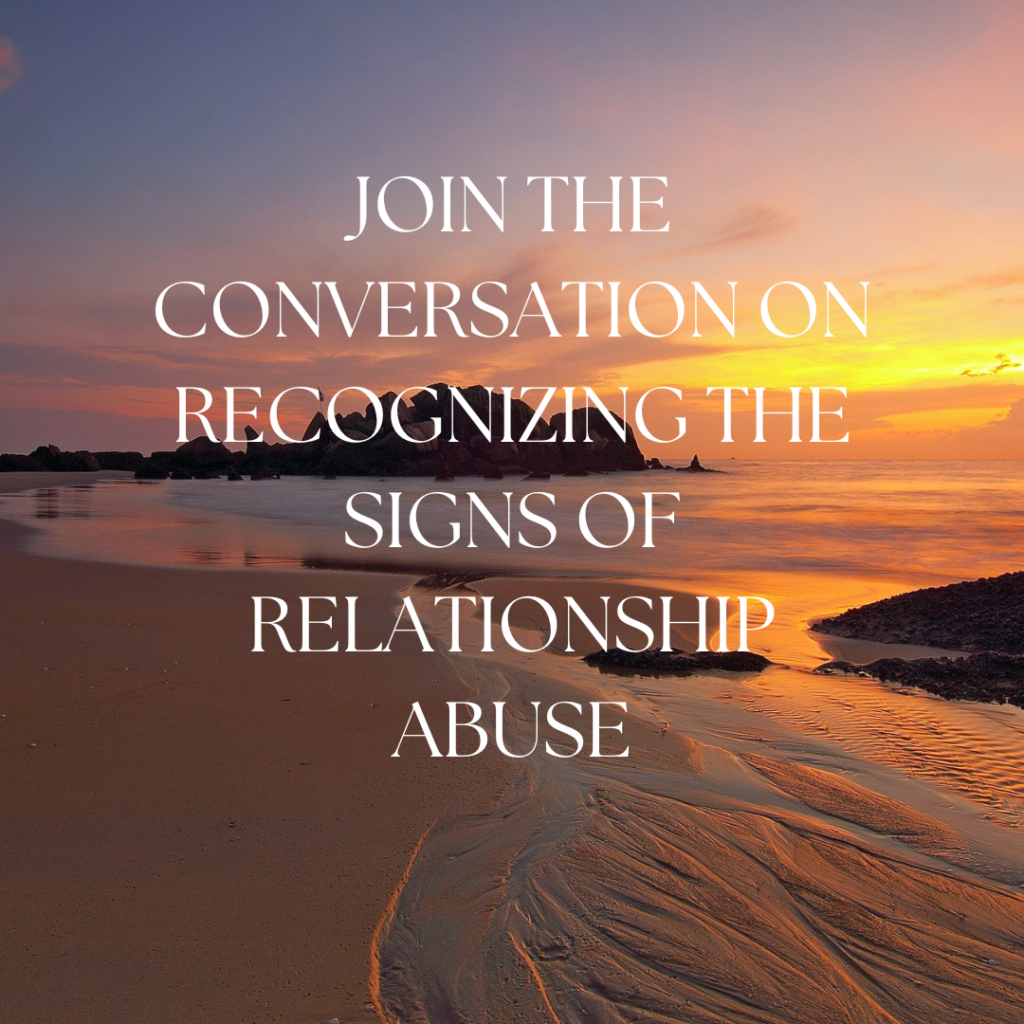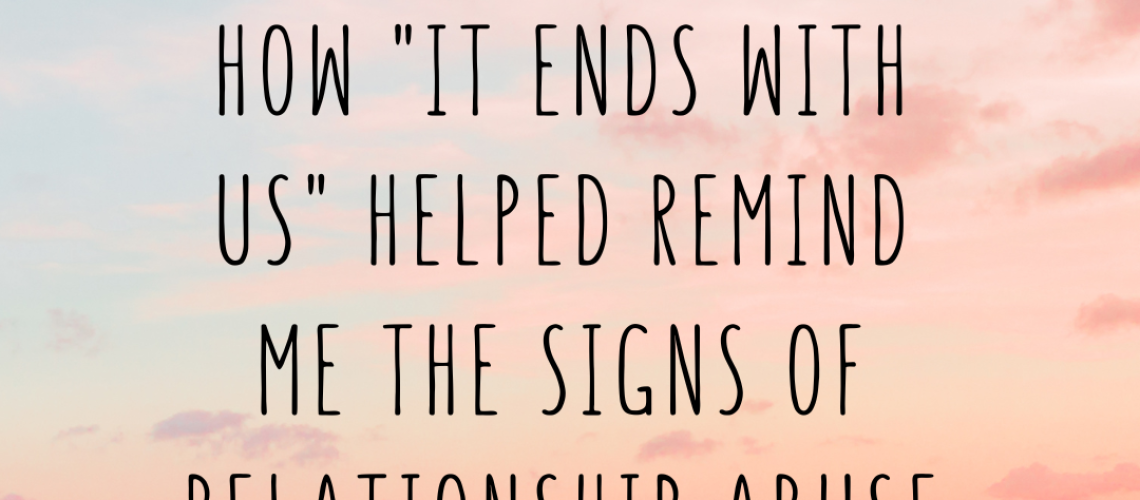Table of Contents Show
- Seeing My Own Story in the Pages
- Recognizing the Full Range of Abuse: Signs of Relationship Abuse
- The Subtle Signs of Relationship Abuse: What We Need to Teach
- Why These Conversations Matter
- When Love Isn’t Enough
- Breaking the Cycle of Relationship Abuse
- A Personal Takeaway
- Join the Conversation on Recognizing the Signs of Relationship Abuse
- Resources for Support:
- Join the Conversation
Like so many people, I recently went to see It Ends With Us with my youngest daughter. She’s an avid reader and had been talking about this movie for weeks. I knew the story wasn’t just a romance—it was about recognizing the signs of relationship abuse, which really piqued my interest. I wondered how the movie would address such a complex and sensitive topic.
By the time the credits rolled, we were both crying for different reasons. The movie struck a chord with each of us, hitting close to home in ways that were both the same and yet deeply personal. It was one of the most emotional movies I’ve seen in a long time, and as we left the theater, we couldn’t stop talking about how powerfully it depicted the complexities of love and the many forms of abuse that can be so subtle at first.
My daughter shared that the book went even deeper into the themes of love and abuse, and that’s when I knew I had to read it for myself.
Not only did I read the book, but I devoured it—and the sequel, It Starts With Us. After finishing both, I immediately went back and read It Ends With Us again, this time with a closer eye on all the small signs of abuse I missed the first time around. What I saw was so eye-opening: the signs of abuse that often go unnoticed, not just in fiction but in real life.
Seeing My Own Story in the Pages
As I read the book and reflected on the movie, I couldn’t help but think about my past relationships—particularly when I first met my ex-husband. There were so many red flags that I overlooked, signs that now seem so clear but, back then, were masked by excitement and love. Like Lily, I made excuses. I convinced myself that his jealousy, control over where I was or who I was with, and even how I dressed were just signs of how much he cared. I missed the subtle but powerful ways he used words to manipulate me into believing I was the problem—that I needed to change to “keep the peace.”
Looking back now, I see how deeply those small signs ran—his need to control what I wore, make subtle, cutting comments that eroded my confidence, and dictate how I spent my time and with whom. Abuse can start in these small ways, growing gradually into something that completely takes over your life, making you doubt your own worth and decisions.
Reading It Ends With Us reminded me that abuse doesn’t always start with a blow or a slap. It often begins with subtle manipulations—ways that are easy to dismiss or ignore when you’re caught up in the emotions of a new relationship. Like in Lily’s relationship with Ryle, the red flags start in various forms: emotional, verbal, and psychological control that escalates into something more damaging over time.
Recognizing the Full Range of Abuse: Signs of Relationship Abuse
In Lily’s relationship with Ryle, the abuse starts with more than just jealousy or control over who she talks to. It begins with overwhelming gestures that seem like love but are actually ways to draw her deeper into dependence. His jealousy over Lily’s past, particularly her connection with Atlas, escalates, but even before that, there are signs that Ryle’s need to dominate and control every aspect of her life—her space, her emotions, and her choices—are dangerous.

The Subtle Signs of Relationship Abuse: What We Need to Teach
Looking closer, I recognized several early warning signs of abuse in Lily’s relationship with Ryle, including:
- Love bombing: Ryle bombards Lily with attention, text after text, making her feel like she’s the center of his world. But this overwhelming affection is a tactic abusers often use to quickly establish control.
- Stalking behavior: He shows up at her house and work unannounced, and though it may seem romantic at first, it’s a clear sign of possessiveness.
- Charming gestures: Ryle uses flowers, kind words, and grand gestures to keep Lily emotionally invested. While this seems sweet, these acts can mask deeper controlling behavior.
- Fast-moving relationship: Within just five days, Ryle introduces Lily to his mother, quickly escalating the relationship in a way that leaves her little time to reflect on whether this is healthy.
- Gaslighting: Ryle downplays Lily’s concerns after his violent outbursts, making her question her own reality and whether she’s overreacting.
- Extreme mood swings: His emotional unpredictability leaves Lily unsure of when he will switch from being loving to enraged, making her feel responsible for his moods.
- Isolation: Ryle slowly distances Lily from her past and from Atlas, pushing her to rely solely on him for emotional support.
- Blaming and minimizing behavior: After his outbursts, Ryle minimizes the severity of his actions, blaming his difficult job or past trauma as reasons for his behavior.
- Possessiveness: Ryle’s need for constant reassurance about Lily’s feelings for Atlas evolves into controlling and possessive behavior.
- Disregard for boundaries: Ryle frequently ignores Lily’s emotional and physical boundaries, making her feel uncomfortable and invalidating her feelings.
- Sexual abuse: In one of the more harrowing moments of the book, Ryle crosses a boundary by forcing himself on Lily in a situation where her consent is absent. This moment is particularly painful and demonstrates how abuse can escalate from emotional manipulation and control to physical and sexual violence.
This is why understanding the early signs of abuse is so important, especially for young people who might not have the experience to recognize these behaviors. If someone had talked to me about emotional manipulation, control, and sexual coercion back then, I might have seen those signs for what they were. Instead, I brushed them aside—like so many others do—because I thought that love meant compromise, even if it meant compromising my own boundaries.
These signs of abuse don’t exist in isolation. They build over time, intertwining physical, emotional, verbal, and psychological elements. Abuse is about control in every form, from what someone wears to how they speak and, eventually, what they believe about themselves.
Why These Conversations Matter
This book reminded me how important it is for us to talk about these issues with the people we care about—our teens, our friends, and even ourselves. Abuse can be hard to recognize when it’s wrapped in the guise of love, but by sharing stories like Lily’s, we can start important conversations.
It’s time to stop ignoring the red flags and to empower ourselves and those we love with the knowledge that love should never feel like control, fear, manipulation, or violation of any kind. Love should be a safe place, and if it’s not, it’s okay to walk away.

When Love Isn’t Enough
One of the hardest truths It Ends With Us drives home is that love alone isn’t enough to save someone who is abusive. So many of us hold on to relationships, thinking we can fix the person we love or help them change. I’ve been there myself, holding on to hope because I thought love would conquer all.
But what Lily’s story reminded me of is that sometimes love is the very thing that keeps us stuck. Ryle apologizes, he shows moments of kindness, and he makes Lily question her own boundaries. She loves him, and that love makes it harder to walk away—even when she knows she should.
This is something we don’t talk about enough. People often ask, “Why don’t they just leave?” But It Ends With Us shows why it’s not that simple. When love is involved, walking away feels impossible. You question yourself, you hold onto the good times, and you believe the person you love can change.
But as Lily learns—and as many of us have had to learn—sometimes love isn’t enough. No amount of love can fix someone else’s issues. And no one should stay in a relationship that tears them down, no matter how deep the love is.
Breaking the Cycle of Relationship Abuse
Lily’s decision to leave Ryle isn’t just about protecting herself—it’s about breaking the cycle of abuse, especially for her daughter. This hit me deeply as a mother. I realized how important it is to model healthy relationships for our kids and to teach them that love should never come with conditions, pain, or coercion.
For those of us who have been in abusive relationships, it can feel like the cycle is unbreakable. But It Ends With Us shows that it can end—with us. We have the power to stop the cycle to make sure the next generation doesn’t have to experience the same pain we did.
A Personal Takeaway
It Ends With Us didn’t give me a new perspective—it reminded me of all the red flags I once overlooked. The controlling behavior, the subtle manipulation, the excuses I made for things that didn’t feel right. This book brought back those memories and made me realize just how important it is to talk about these issues—especially with young people who may not yet know how to spot the early signs of abuse.
That’s why I’ve created this platform—to help kids, teens, parents, teachers, and anyone who wants to learn how to recognize the warning signs of unhealthy relationships. My goal is to provide tools, resources, and support to help people spot the red flags early and build healthier, more respectful connections.
If this resonates with you, I invite you to follow my blog and join my mailing list to stay updated on future posts, resources, and helpful content. Together, we can start the conversations that might help someone else see the signs they’ve been missing.

Join the Conversation on Recognizing the Signs of Relationship Abuse
It Ends With Us touched on so many important topics, and I know these conversations are just the beginning. If this story moved you the way it did me, I’d love for us to continue exploring these important topics together. Whether you’ve experienced something similar or are simply looking to learn more, let’s build a supportive community where we can share, learn, and grow.
I’d love for you to stay connected. Sign up for my mailing list to receive personal reflections, helpful resources, and updates on new content. By joining, you’ll be part of a space dedicated to real conversations and meaningful change.
And, of course, if you or someone you know is dealing with an abusive relationship, remember—you’re not alone. The National Domestic Violence Hotline is always there for support.
Resources for Support:
- National Domestic Violence Hotline
- Loveisrespect (focused on teens and young adults)
- RAINN (Rape, Abuse & Incest National Network)
These organizations offer confidential support, information, and resources for those experiencing abuse.
Join the Conversation
I’d love to hear from you. Have you ever recognized any of these signs of abuse in your own relationships or those around you? Let’s keep the conversation going—feel free to share your thoughts and stories in the comments below.



